Menu
Physics Lesson 5.4.2 - Conversion of Elastic Potential Energy into Other Forms of Energy
Please provide a rating, it takes seconds and helps us to keep this resource free for all to use
Welcome to our Physics lesson on Conversion of Elastic Potential Energy into Other Forms of Energy, this is the second lesson of our suite of physics lessons covering the topic of Elastic Potential Energy and Combination of Springs, you can find links to the other lessons within this tutorial and access additional physics learning resources below this lesson.
Conversion of Elastic Potential Energy into Other Forms of Energy
As a stored energy, the elastic potential energy can be converted in other forms of energy as well. Some of the most widespread examples in this regard include:
a. From elastic to kinetic energy and vice-versa
A horizontal compressed spring transmits its stored energy to an object attached to it when released, like the one shown in the figure
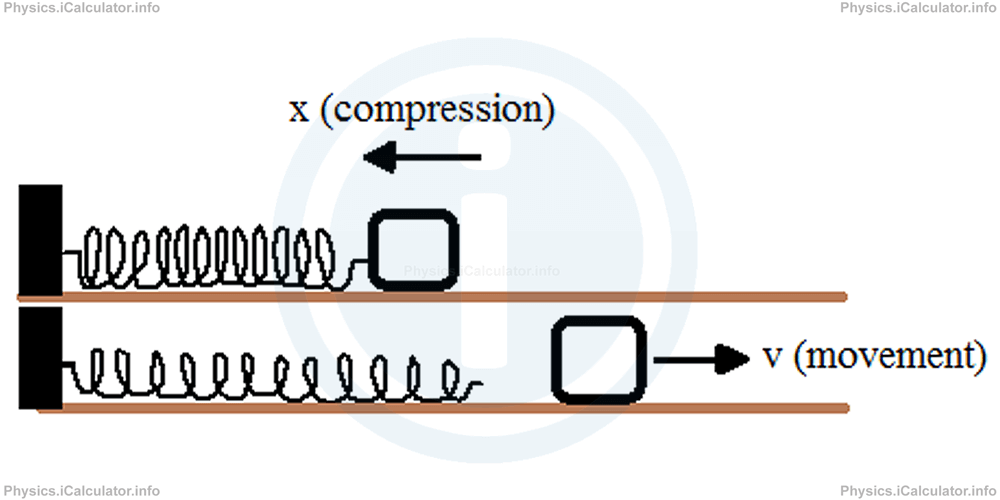
Initially, the spring is compressed by x units. As a result, it stores elastic potential energy. When released, it transmits its energy to the attached object. As a result, the object of mass m starts moving at velocity v. The chain of energy conversion in this case is
We can write:
On the other hand, if a moving object compresses a spring like the one shown in the figure below,
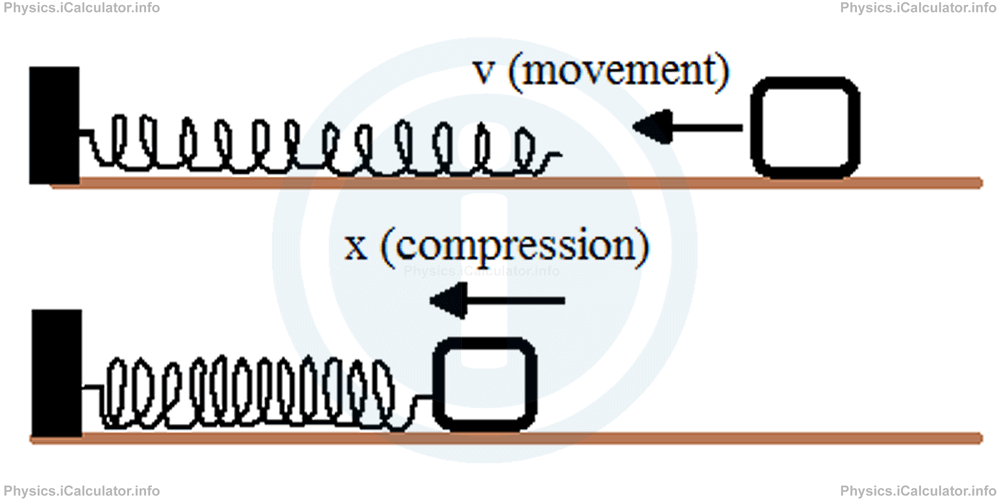
the initial kinetic energy of the object converts entirely into elastic potential energy of the spring.
The chain of energy conversion in this case is
We can write:
b. From gravitational potential energy to elastic potential energy and vice-versa
If an object is released from a height and it compresses a spring when falling on the ground, this is an example of GPE → EPE conversion. Look at the figure:
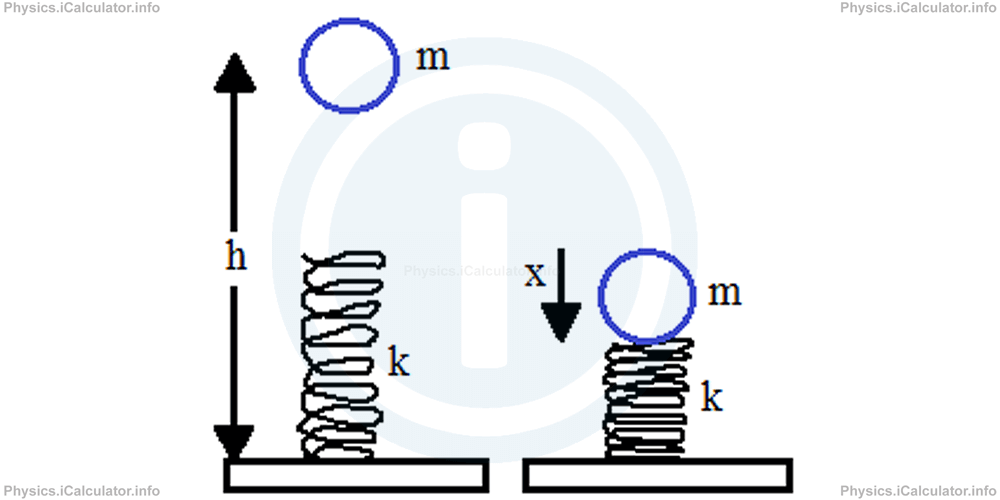
In fact, GPE of the object is first converted into KE as an intermediate stage and then, KE converts into EPE of the spring. Therefore, the chain of energy conversion is
In symbols, we have the following equation
Neglecting the intermediate stage, we obtain
On the other hand, a compressed spring in the vertical position can raise the object, which has caused this compression, up to a certain height h as shown in the figure.
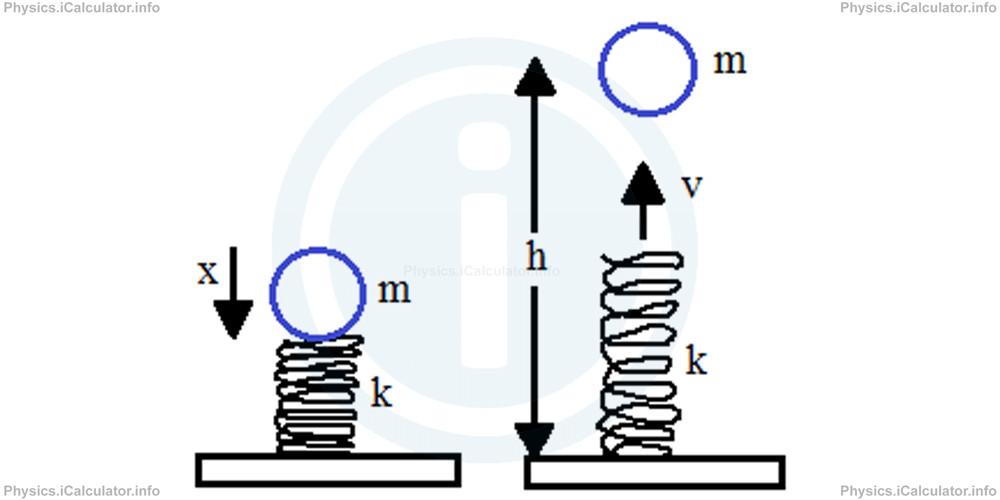
Obviously, this process contains an intermediate stage as well, i.e. the stage in which the initial elastic potential energy stored in the compressed spring convers into kinetic energy of the object and then, this kinetic energy converts entirely into gravitational potential energy when the object reaches its highest position h.
The chain of energy conversion in this case is
In symbols,
Again, if we are not interested on the intermediate stage, but only on what happens at the beginning and at the end of the process, we obtain
c. From elastic into thermal energy
First of all, it would be worth pointing out that friction is a process during which mechanical energy of a moving object converts into thermal energy of both surfaces in contact. Therefore, if a compressed spring (which is a source of stored elastic potential energy) pushes an object attached to it when released, it happens that the object after moving for a certain distance eventually stops because of friction with the ground.
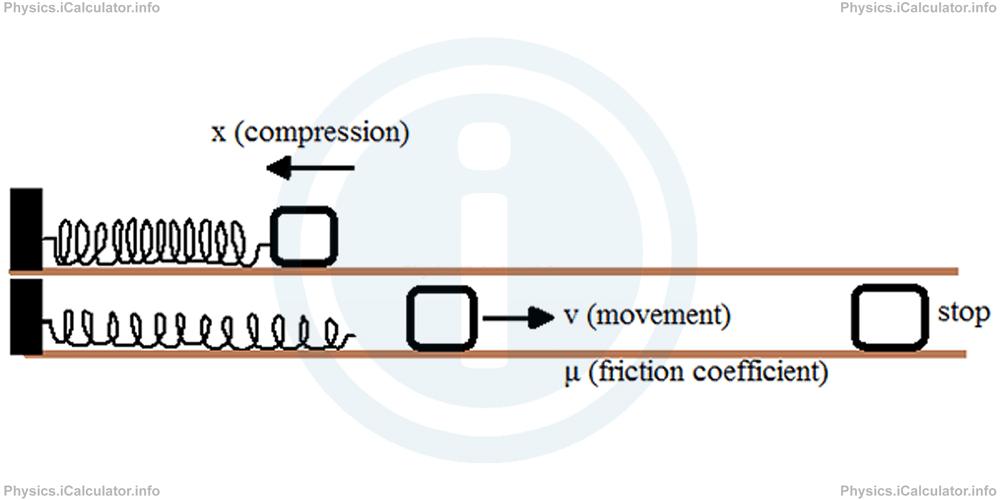
At the end of process, the object has no energy left. This is because the kinetic energy of the object produced by the pushing effect of the compressed spring gradually converts into thermal energy because of friction. We call it the "work done by the frictional force" (in short, Wf), which takes out all the kinetic energy of the object. The chain of energy conversion in this case is
The above scheme does not contradict the law of mechanical energy conservation rather, it is a generalization of this law. This generalized law is known as "The Law of Conservation of Energy". It states that:
"Energy can neither be created, nor destroyed; it only can be converted from one form of energy to another."
The above law is one of fundamental laws in physics.
The chain of energy conversions written above, can be mathematically expressed as:
Or
k × x2/2 = m × v2/2 + m × g × h = μ × N × ∆x
where x is the extension or compression of the spring and Δx is the displacement of the object. They express very different things.
Let's see a comprehensive example in which all the abovementioned energies are considered.
Example 2
A 800 g ball starts rolling at 25 m/s along a horizontal surface by friction coefficient 0.2 as shown in the figure. After moving for 4 m, the ball starts raising up along a smooth slope, and when it reaches the height of 3 m, it continues moving horizontally until it hits a spring. As a result, the ball compresses the spring by 2 cm. Calculate the spring constant. For simplicity, take g = 10 N/kg.
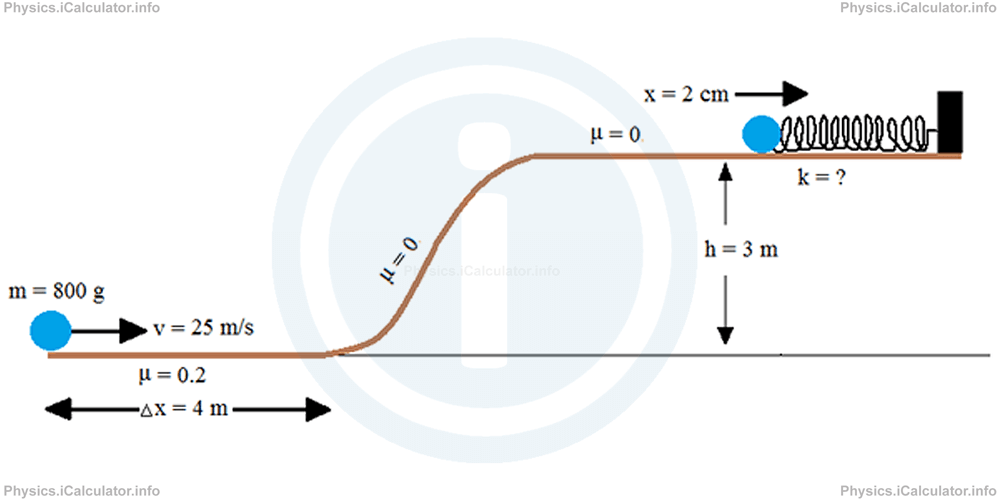
Solution 2
First, we must analyse the energy conversions taking place in this process. Thus, the ball initially has only KE because it is at ground level. In the first 4 m of motion, some of this energy converts into thermal energy due to the friction with the ground (we write it as Wf). The remaining KE after this distance, splits into KE and GPE when the object raises at h = 3m. At the end, only the last KE converts to EPE of the spring, as the height doesn't change.
If we put the index 1 at the starting position, 2 after 4 m of displacement, 3 when the ball is just raised at h = 3m and 4 at the end of process, when the ball has compressed the spring as shown in the figure below,
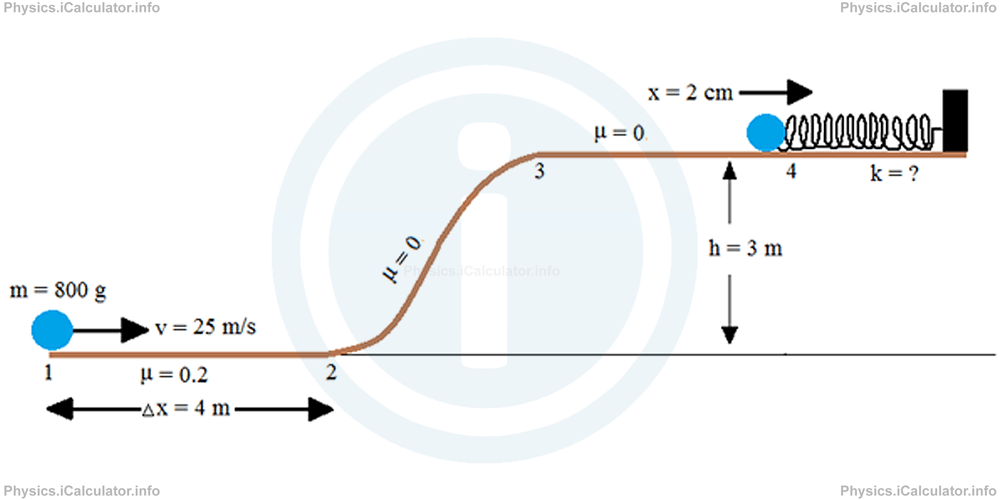
we obtain the following scheme for the energy conversions taking place in the process.
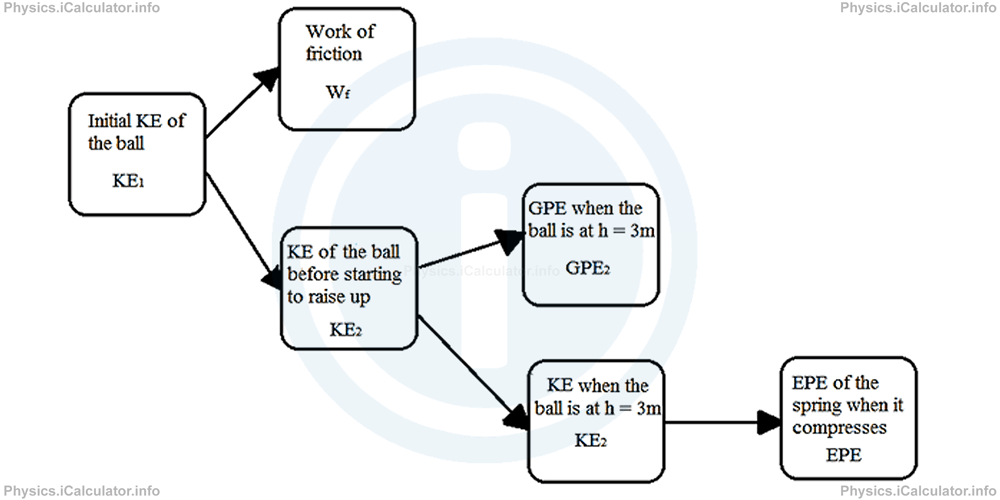
Mathematically, we can write:
Substituting KE2 with EPE, we obtain
Therefore, we have:
Substituting the values (we must pay attention in writing m = 0.8 kg instead of 800 g and x = 0.02 m instead of 2 cm), we obtain:
250 - 6.4 = k × 0.0002 + 24
250 - 6.4-24 = k × 0.0002
219.6 = k × 0.0002
k = 219.6/0.0002
= 1 098 000 N/m
You have reached the end of Physics lesson 5.4.2 Conversion of Elastic Potential Energy into Other Forms of Energy. There are 3 lessons in this physics tutorial covering Elastic Potential Energy and Combination of Springs, you can access all the lessons from this tutorial below.
More Elastic Potential Energy and Combination of Springs Lessons and Learning Resources
Whats next?
Enjoy the "Conversion of Elastic Potential Energy into Other Forms of Energy" physics lesson? People who liked the "Elastic Potential Energy and Combination of Springs lesson found the following resources useful:
- Conversion Feedback. Helps other - Leave a rating for this conversion (see below)
- Work, Energy and Power Physics tutorial: Elastic Potential Energy and Combination of Springs. Read the Elastic Potential Energy and Combination of Springs physics tutorial and build your physics knowledge of Work, Energy and Power
- Work, Energy and Power Revision Notes: Elastic Potential Energy and Combination of Springs. Print the notes so you can revise the key points covered in the physics tutorial for Elastic Potential Energy and Combination of Springs
- Work, Energy and Power Practice Questions: Elastic Potential Energy and Combination of Springs. Test and improve your knowledge of Elastic Potential Energy and Combination of Springs with example questins and answers
- Check your calculations for Work, Energy and Power questions with our excellent Work, Energy and Power calculators which contain full equations and calculations clearly displayed line by line. See the Work, Energy and Power Calculators by iCalculator™ below.
- Continuing learning work, energy and power - read our next physics tutorial: Power and Efficiency
Help others Learning Physics just like you
Please provide a rating, it takes seconds and helps us to keep this resource free for all to use
We hope you found this Physics lesson "Elastic Potential Energy and Combination of Springs" useful. If you did it would be great if you could spare the time to rate this physics lesson (simply click on the number of stars that match your assessment of this physics learning aide) and/or share on social media, this helps us identify popular tutorials and calculators and expand our free learning resources to support our users around the world have free access to expand their knowledge of physics and other disciplines.